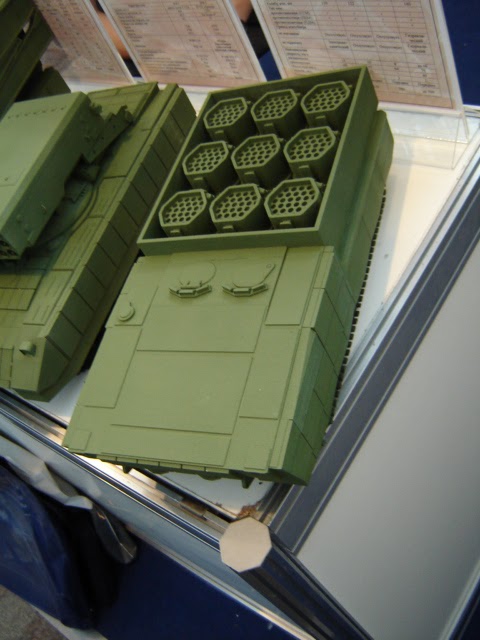The rear charge would need to have space in the center to blow through- and that cuts through the optimum geometry- cone of the other charges.
The Hellfire has two full calibre HEAT charges in it, a Russian tank shell has three including a nose mounted small charge to deal with ERA... if you can manage three then four is just one more...
not really dodge- more like giving more time for wind dispersion effects and the random changes in the vehicles motion to take place and reduce chances of a hit.
The problem there is situational awareness... even if you detect the round being fired if you swerve how can you be sure you are reducing the chance of a hit... the round might have been going to miss but your swerve might put you right in line for an impact...
You are in a situation where your tank knows somehwere behind a wall are armored targets and uses UAV's to get somehow the elevation and trejectory from a 3rd source to hit its target? In that case it would be easier to order Krasnapol like artillery shell designated via UAV or just an armed UAV.
That is what I was thinking too. Or get a couple of tanks within the unit to fire HE shells with impact fuses to blow down the wall and try to spot the target through the dust using thermals for a shot...
The scram-jet technology available is not nearly developed {snip}
Totally agree... it has potential but needs work.
the Gyrojet pistol had a rocket propelled projectile that was not effective within 10m as the velocity was too low. Pistols are the most use within 10m as beyond that range accuracy makes them a little useless except on TV.
So the obvious growth patterns for APFSDS rounds would be the advent of quantum computing aiding in the creation of a very light weight composite plastic dart shell filled with composite liquid gel densely impregnated (like Octomom Razz ) with carbon nano-spheres and when struck with enough pressure (most likely the outer tank chassis/hull wall) that the outer plastic dart shell and the liquid gel quickly condenses in to a substance that's density nears that of diamond carbon elements...combined that with the fact that the plastic dart shell will be significantly lighter, and with the creation of more powerful and more efficient burning propellants (aided with quantum computing) you could possibly see KE penetrator's with penetrating statistics that exceeds (1.5x - to - 3x's) that of KE projectiles of this generation!
Interesting speculation, but the issue would be with the lack of mass of such a projectile letting it down in the terminal ballistics phase. Perhaps a variation would be a cheap and simple lead penetrator capped with a gel cap and side supporting nano structures that super harden on impact so the mass of the lead pushes the super hard tip through the target...
the field is open and new EM propellents together with left field ideas... how about instead of launching a penetrator you fire a large jar of acid to eat through the outer hull and expose the crew to small arms fire... or an EMP round that disables the tank by destroying all its electronics and sighting equipment... or even a round that generates an enormous electrical charge that electrocutes the crew...
Current use of ramjets have a rocket motor to accelerate the projectile with a ramjet sustainer... perhaps a combination of large propellent charge with a large full calibre round that is filled with solid rocket fuel that when it burns out the cavity remaining becomes the scramjet engine where the core down the centre of the round is the penetrator.
in fact if you adapt that to a long narrow missile like HERMES with a large solid rocket booster and then a missile payload that is all scramjet engine except for the guidance bit in the nose with guidance fins for flight control so the rocket booster accelerates the missile to high speed and the the rocket fuel in the scramjet cavity burns a few seconds more to accelerate the missile even more and then the scramjet powers up to accelerate the missile to perhaps 3-4km per second with a 2 metre long 15kg core or DU or whatever with the guidance system aiming the weapon at hard targets 15-20km distant... 4-5 second flight time to 20km and terminal effect would be impressive.
Here are three Russian kinetic energy rounds with scramjets (not subsonic combustion ramjets). Scramjet technology is ancient technology in Russia, and they have many systems using the technology.
Tested only AFAIK...
the left hand one looks like an SR-71...





